We trained at the world's most famous boxing gym with the man who has trained 19 world champions - here's what it was like
Afterwards, I watched a sparring match with Roca and the other trainers. I wasn't getting in the ring today, but may be next time.

Lastly, I did some pull-ups. I had worked up a good sweat at this point.
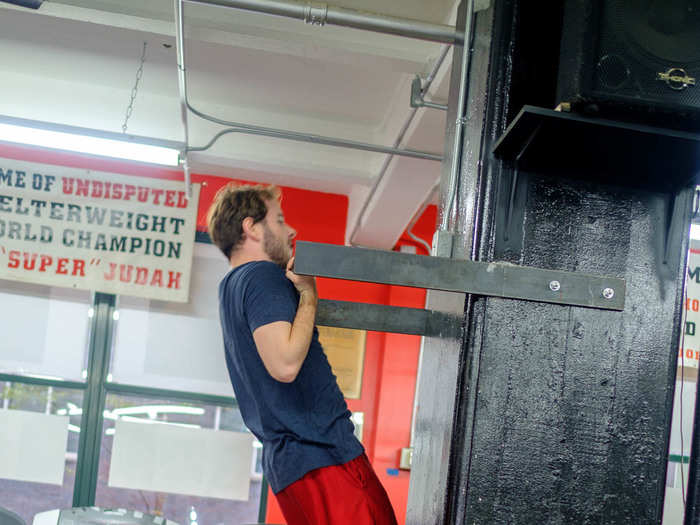
He then took me through a 15-minute ab workout, which I have to admit was one of the hardest I've ever done. My abs were screaming by the end. Your core is one of the most important muscle groups to work for boxing.
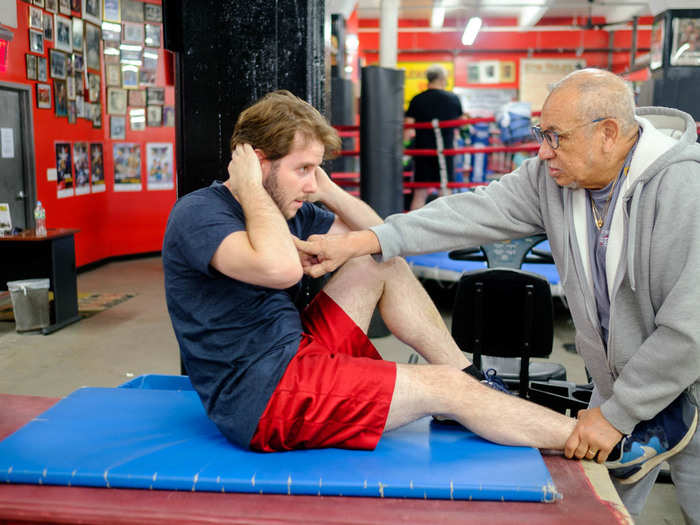
We finished up with some more conditioning. I ran for about 20 minutes, but Roca said he usually makes fighters run for a lot longer to build stamina. He was going easy on me.
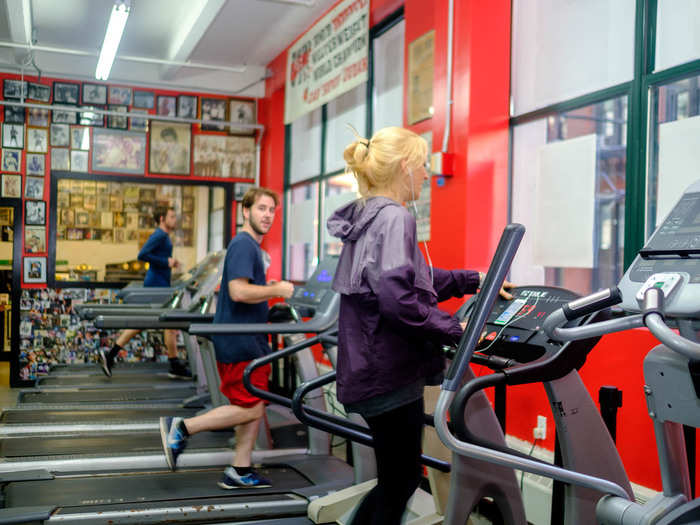
After we were finished with the punching part of the training, Roca explained that I wasn't actually that bad. He had essentially taken me through a week's worth of training in a single hour.
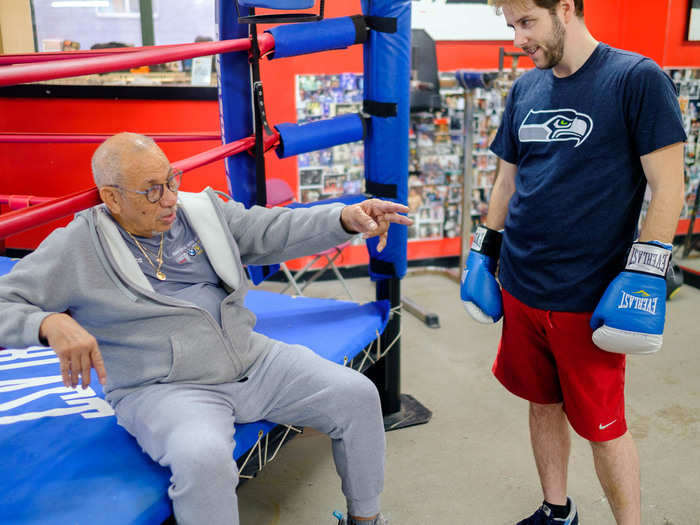
After about fifteen minutes of working on jab combinations and step work, Roca called time. When Roca trains pros, he has them in the gym all the time, conditioning, sparring, or hitting bags. "Professional fighting is hell," said Roca.
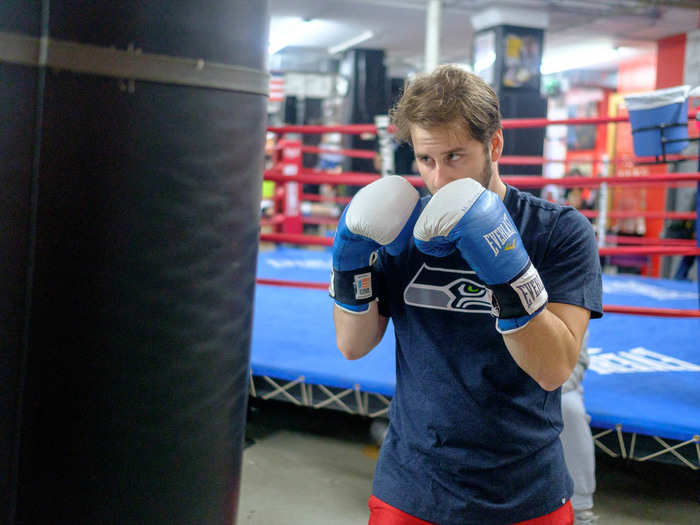
Roca usually only trains pros, he told me. "I don't like training amateurs because I don't like the aggravation," he said. But both have their problems. While pros don't make a lot of the mistakes amateurs do, he said, pros often decide they want to fight like Floyd Mayweather, when their style isn't suited to that.
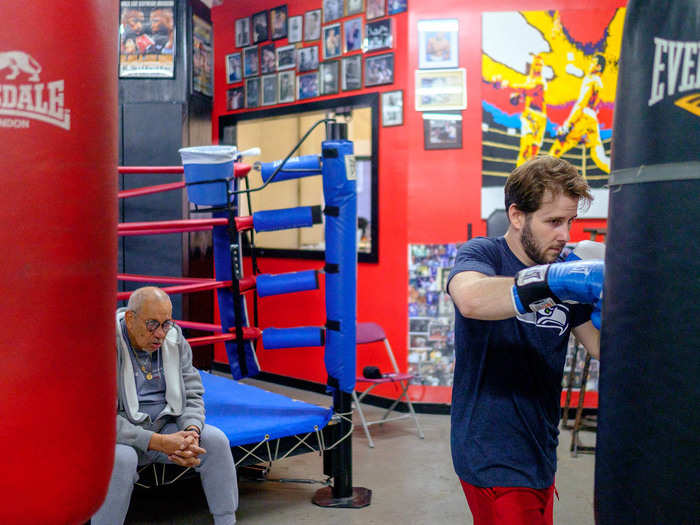
Inevitably, Roca had a lot to say about my inconsistent technique. "Amigo, you must have fissures in your brain," he admonished me when I would do something he had just taught incorrectly.
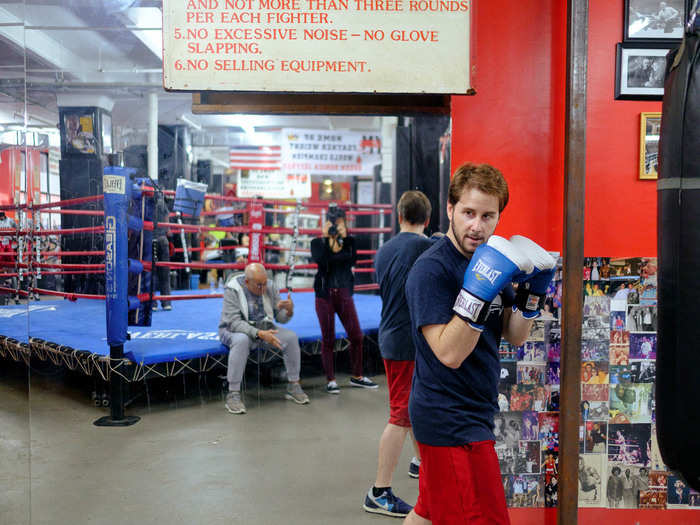
Then on Roca's command, I'd get into a boxing stance and execute jab combinations. In most boxing matches, according to Silverglade, conditioning wins. That's even more true in amateur fights. Sometimes, the gym runs special programs for Wall Streeters to fight in as little as 12 weeks. Those trainings are heavily focused on proper conditioning.
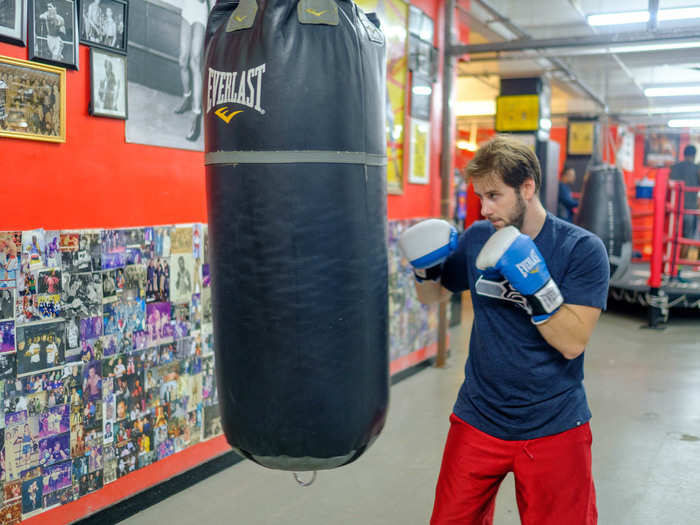
He had me shuffle around the heavy bag, or execute different steps. Hard training, according to Silverglade, means being in the gym 5-6 days a week and running on your own time.
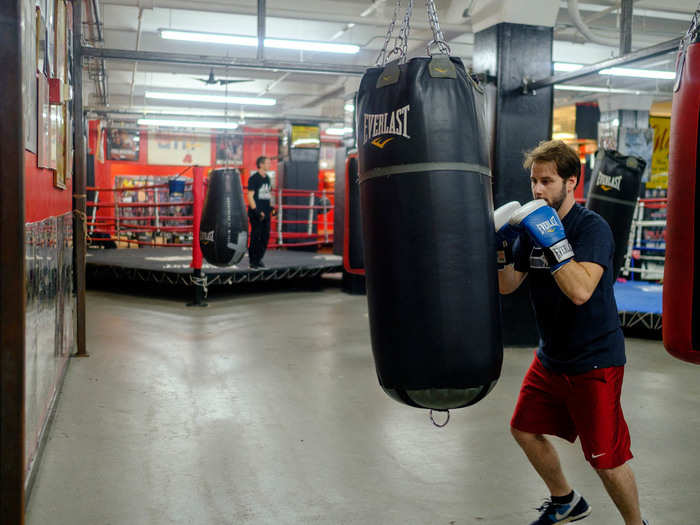
Next he had me combine the stepping and shuffling I had learned earlier with the jabbing technique we had just worked on. How Roca and others train newbies and Wall Streeters is identical to how they train professional fighters, Silverglade said. The only difference is speed, due to how much more pros train.
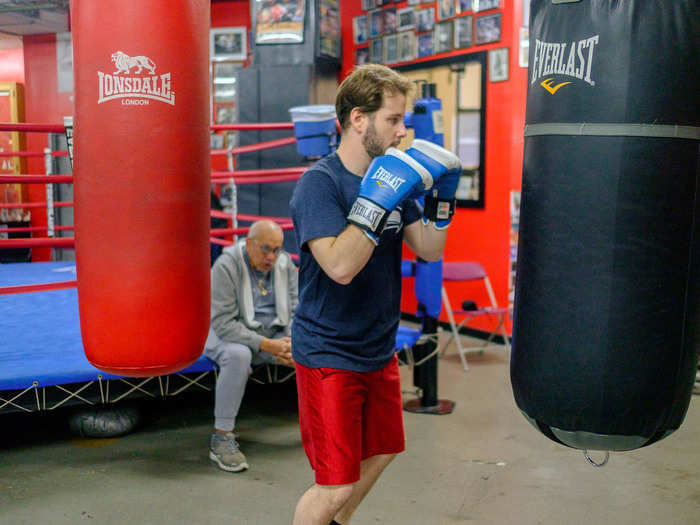
"Everyone wants to prove how hard they can punch," Roca said. According to Silverglade, it takes about six months of hard training to get a fresh fighter like me ready to fight in an amateur match.
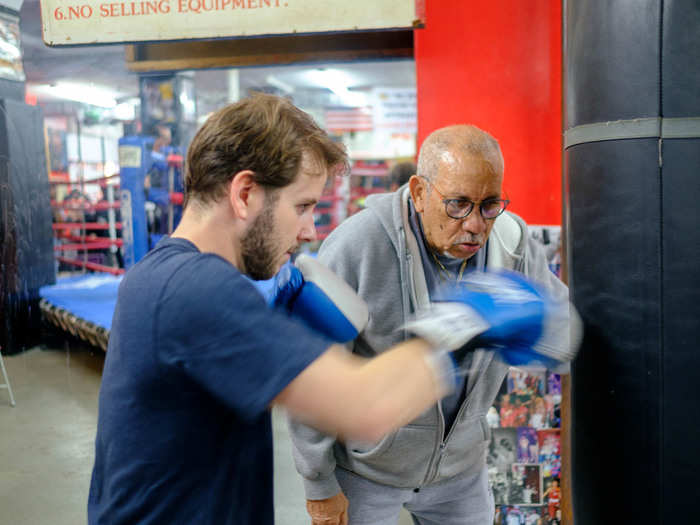
One of the most common habits, he said, is that people try to hit the bag as hard as they can. That's all they try to do, he said. But technique and precision are far more important to master first than power.
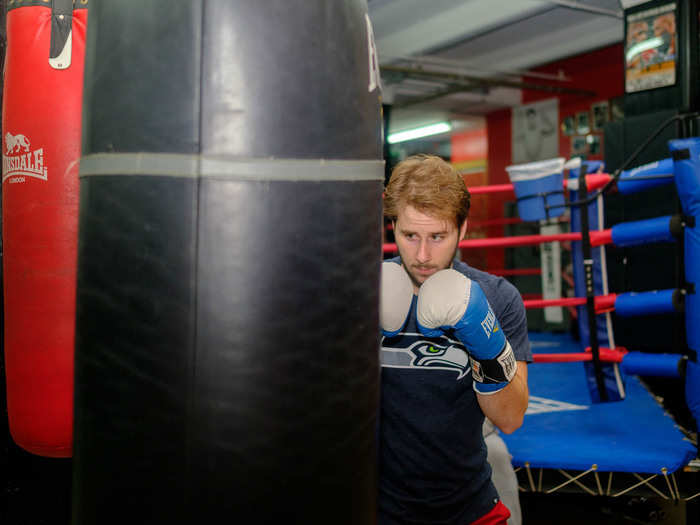
The biggest problem with new boxers and amateurs, according to Roca, is that they all think they know how to box. Then he has to break their bad habits.
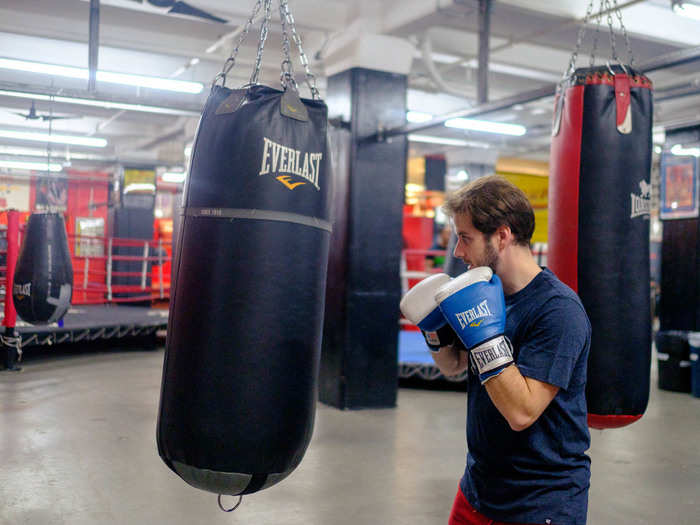
We kept at it. I'd get some punches right and some wrong, often with no rhyme or reason. Roca was hard on me, telling me later that I'm the kind of person who won't learn anything unless he's tough. He's probably right.
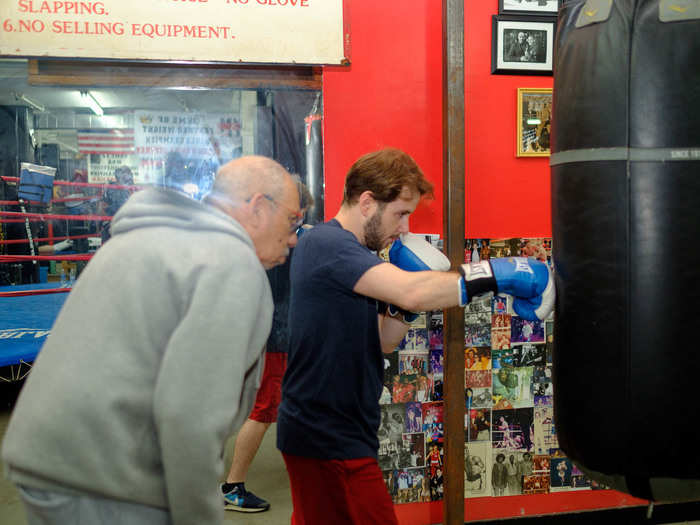
Roca says he usually trains between 8-12 people per day, but he's always laser-focused. If I had one jab with poor technique, he stopped me to correct it.
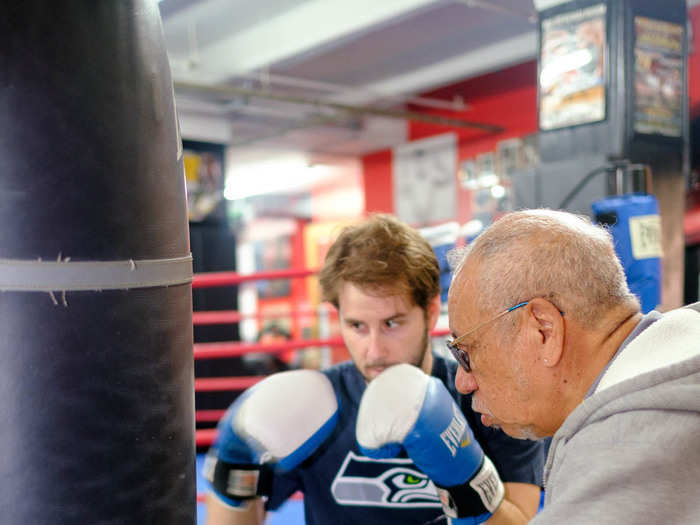
There were a lot of jabs with poor technique. One mistake I kept making was bringing my elbow out and turning my whole arm for the jab. You're only supposed to turn your fist.
Next up was teaching me how to jab. Keep your body still, extend your fist straight. Rotate only the fist as you punch and pull the hand back immediately to defend.
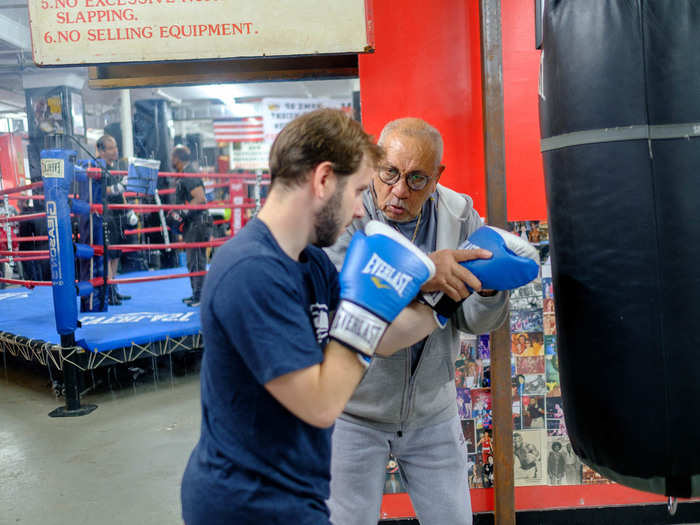
Still not perfect, but more like it. Weight evenly distributed between the feet, spread diagonally, with a little bounce in the knees. Elbows down, hands up, and chin down slightly behind the gloves.
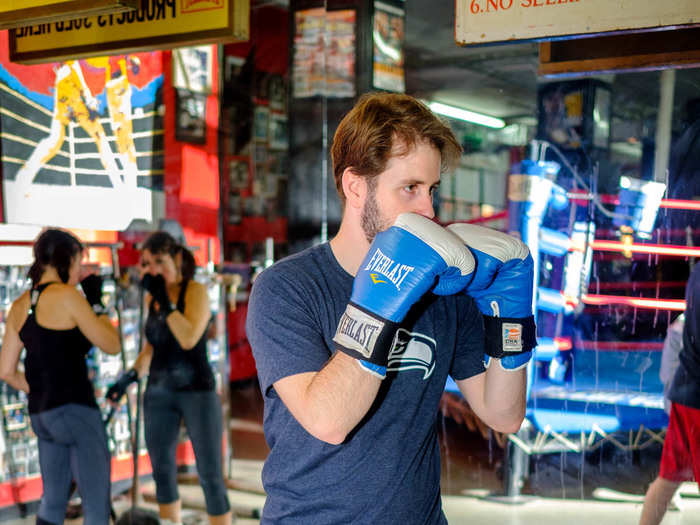
Before we started punching I had to get in a proper stance. This wasn't it. Hands open and down, feet splayed — this was a recipe for getting clobbered in the ring.
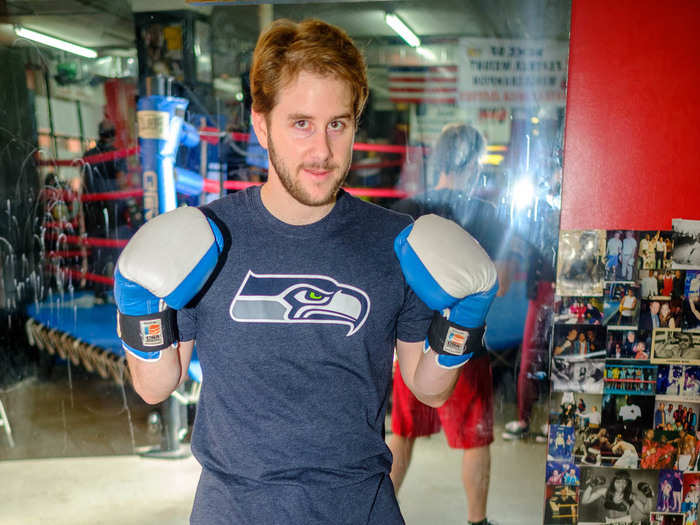
We worked at that for a while. It was clear I wasn't going to spar today. Roca said new fighters can start to spar after a week if they're talented enough. Some will take much longer.
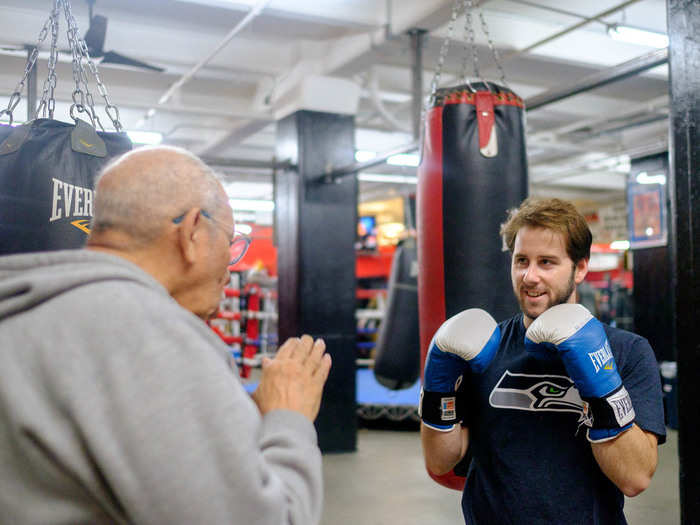
If I was too slow, he pulled his hand away. If I moved too hard, he chastised me for punching. It takes a great deal of control to move your hand quickly without power.
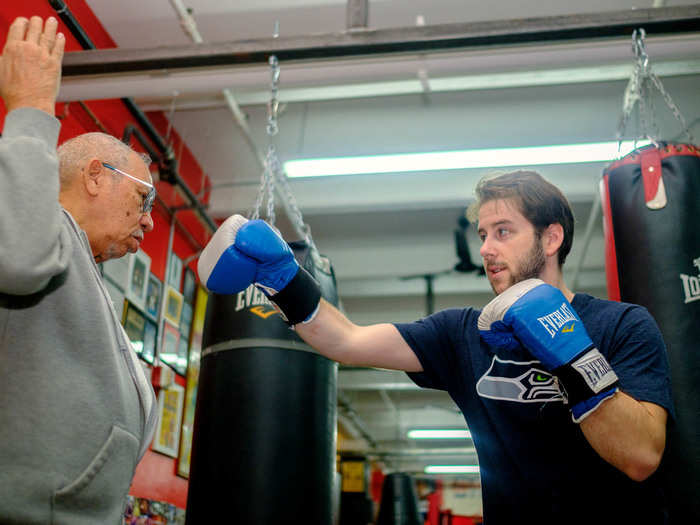
First up was teaching me speed and control. Roca told me to just "touch" his hand, not punch.
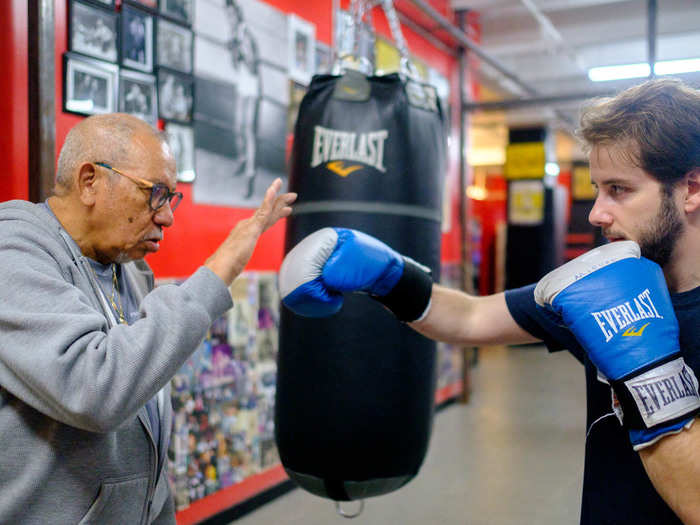
Next it was time to learn how to punch. Roca usually introduces how to punch last, after a week or more training other skills. Once you teach a fighter how to punch, he says, that's all they want to do.
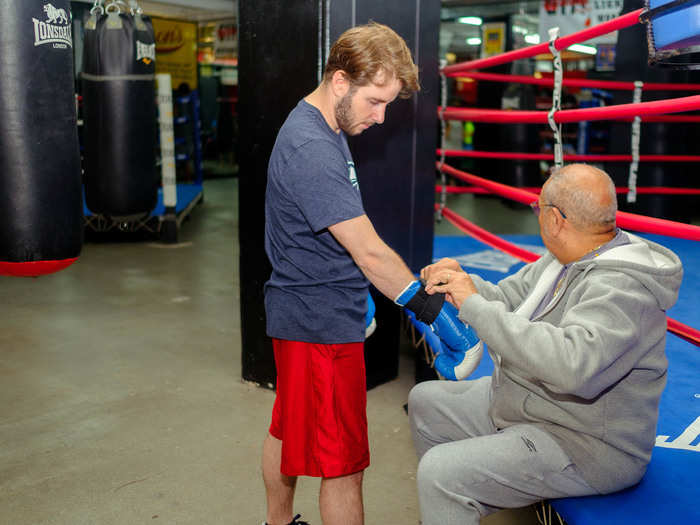
Roca called out different footwork combinations as I moved around the bag, shifting between shuffles and steps. As he told me to step to the bag, I often reflexively pulled my head back to not get too close. A bad habit, Roca said.
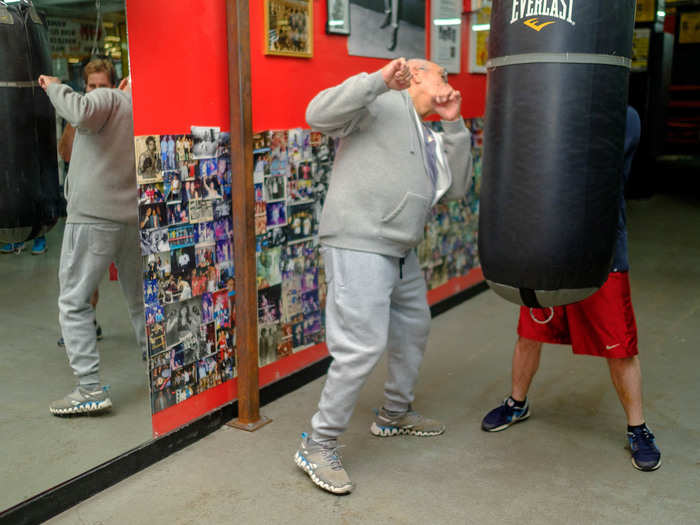
Next we worked on the boxing "shuffle." In the "shuffle," you bring the back foot up and kick the front foot out. The shuffle helps you move around the ring quickly, but doesn't allow you to stay in a grounded fight stance.
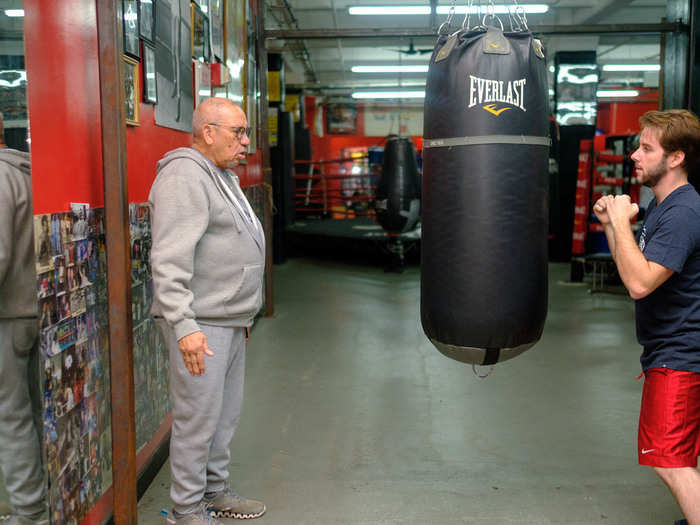
Roca explained that all movement when training is in relation to the heavy bag, which represents the opponent. Understanding that made the step work a lot easier.
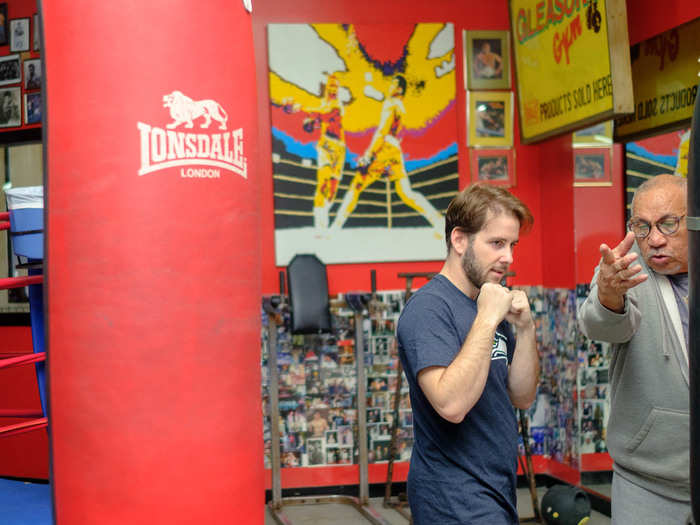
The key to boxing is repetition, according to Silverglade. "There are only so many different ways to stand or punch," he said. The goal is break bad habits, like my hand-dropping (pictured here) and turn the right actions into "reflexes."
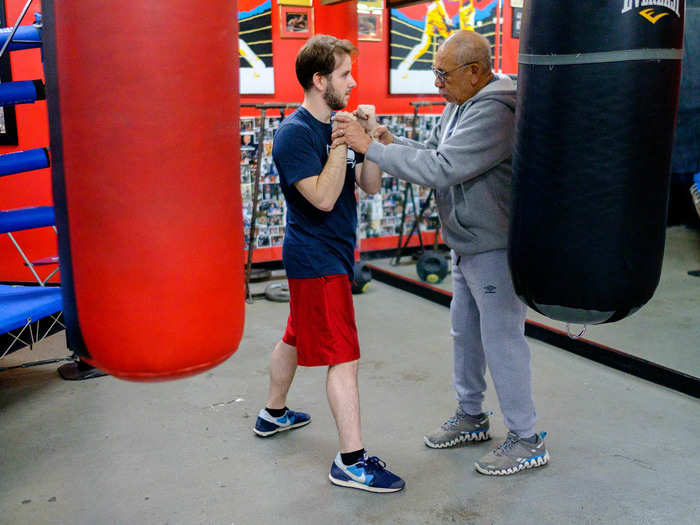
For the first 20 minutes of the training or so, all we did was execute different steps — left, right, front, back. I thought this was because I was terrible. Roca told me later that when trains new fighters, he works solely on "footwork" for days.
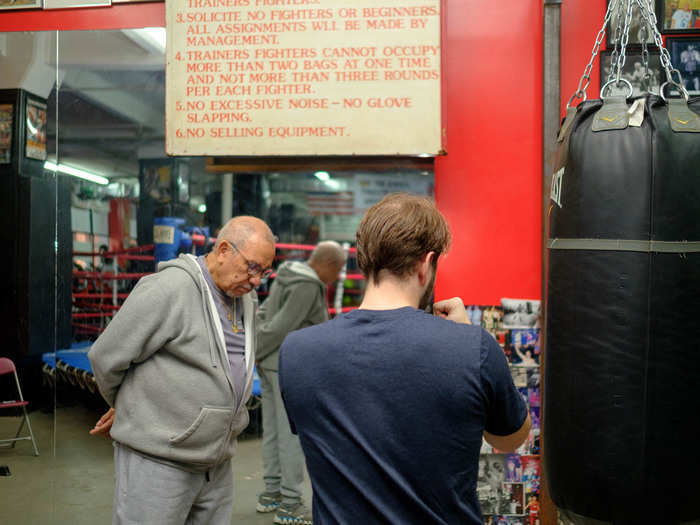
I had some trouble getting the step down. I can't imagine Roca had much fun going from training world champions to me. When I got the step or stance wrong, he would kick my foot into the right position.
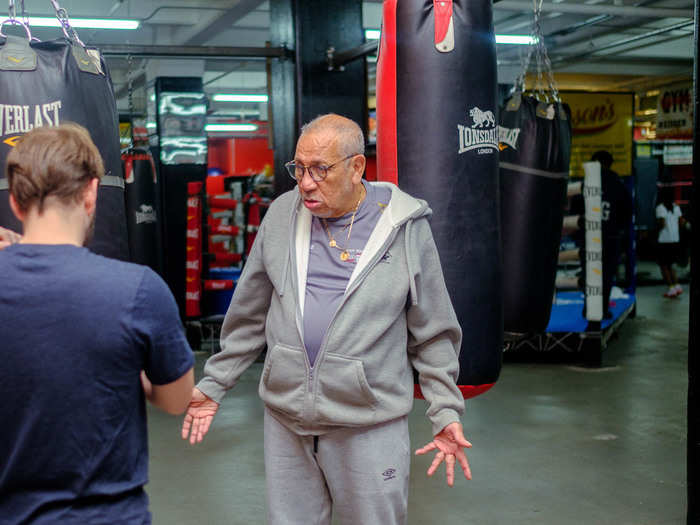
The proper boxing step is to "step and drag." You step with your lead foot and then drag the other foot, keeping your stance grounded and ready to attack or defend. If you want to move left, you lead with your left foot. If you want to move right, you lead with your right foot.
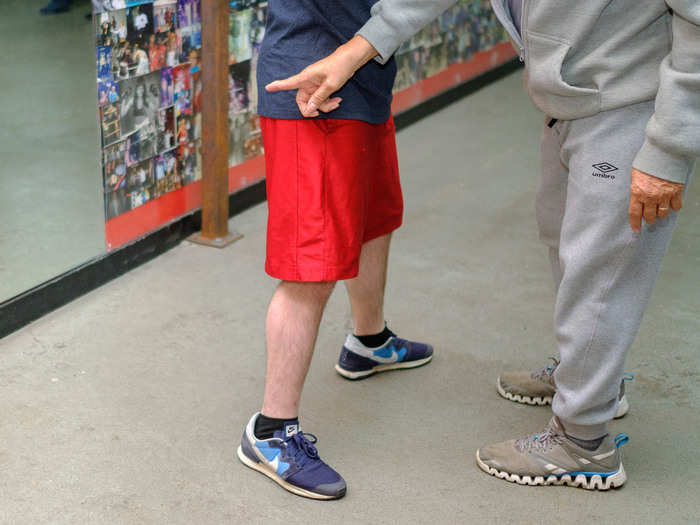
I dropped my hands nearly every time I moved at first. I didn't even realize I was doing it.
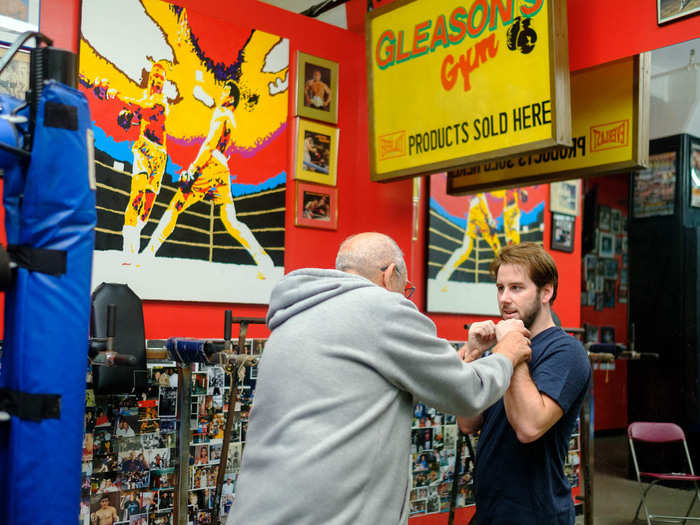
For Roca, that means learning a proper boxing stance, learning how to "step," and having the right hand positioning.
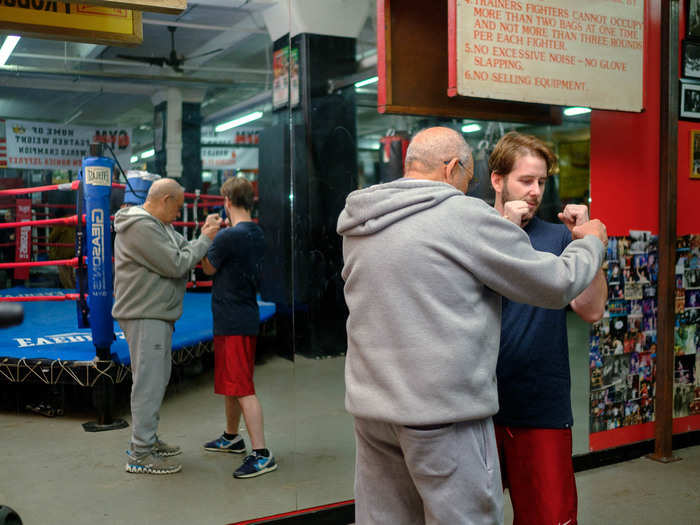
Afterwards, Roca taught me how to stand and "step." Roca said the best advice he had for someone learning to box is to "learn the basics and get it right first."

Roca got me warmed up with fifteen minutes of jump-roping, a signature workout to improve conditioning. Conditioning, according to Silverglade, is more important than ability when it comes to winning boxing matches.
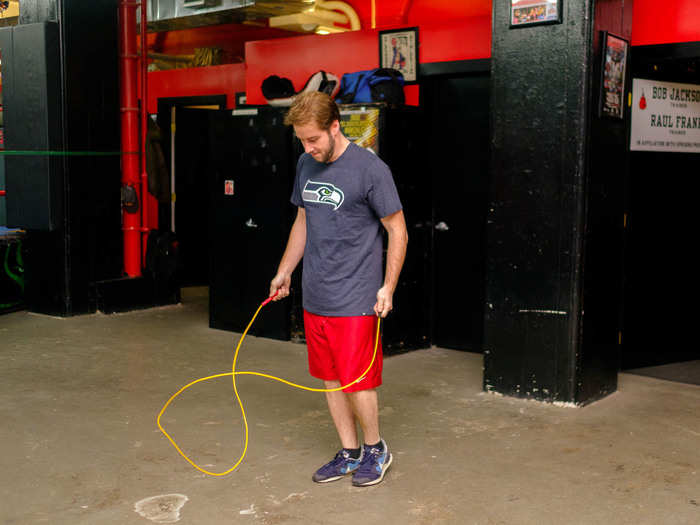
Silverglade introduced me to Hector Roca, my trainer for the day. Roca has trained 19 world champions, including Arturo Gatti. Roca has also been a go-to trainer for celebrities, training Hilary Swank for "Million Dollar Baby," Wesley Snipes for "Streets of Gold," and Jennifer Lopez, among others.
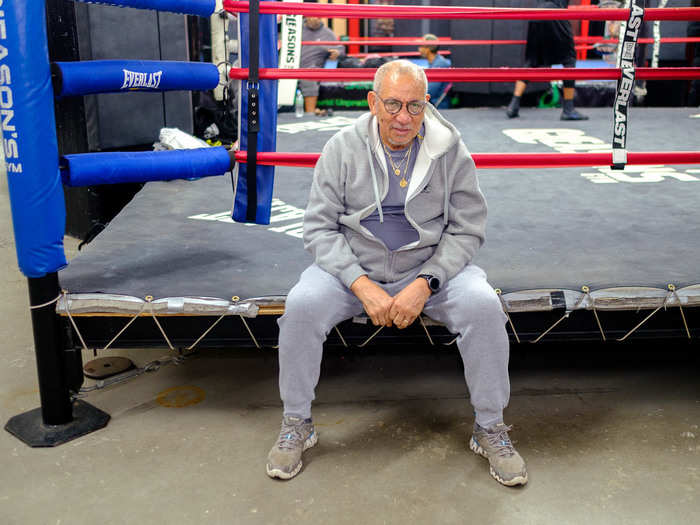
There was a sparring match going on in the gym's front ring. I've only boxed in the backyard in the past, but I was hoping to get in the ring.
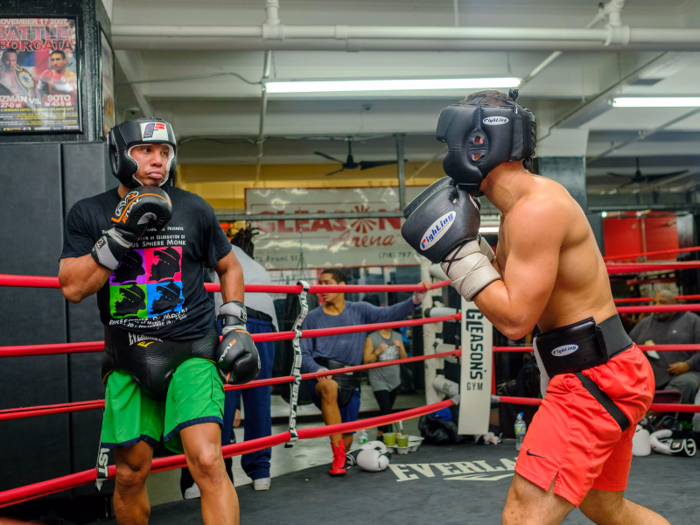
We headed to the office of owner Bruce Silverglade to get set up. Silverglade has helped run the business since 1983. His office is overflowing with nods to the gym's long history.
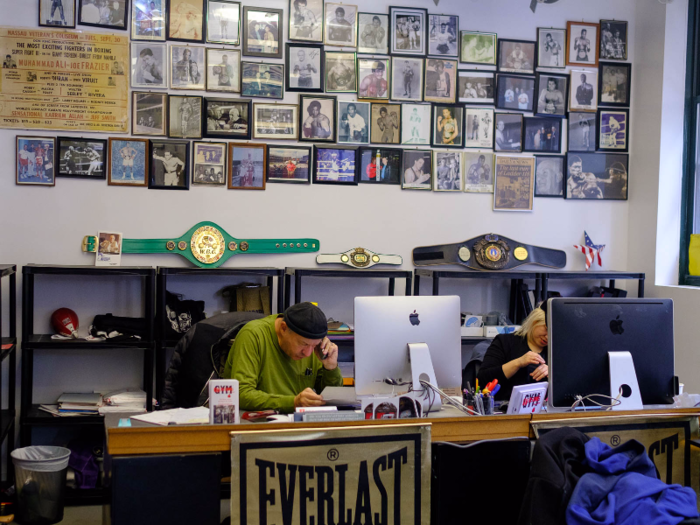
Gleason's Gym is located at 130 Water Street in Brooklyn's trendy DUMBO neighborhood. The gym first moved to DUMBO in 1985, but this is actually its fourth location.
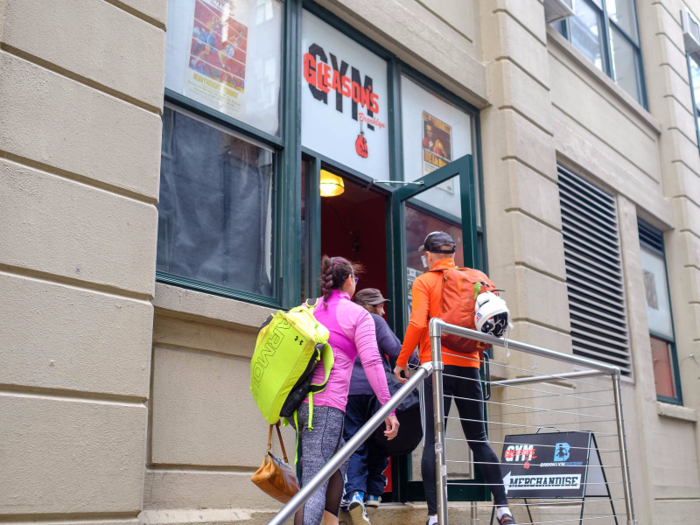
Popular Right Now
Popular Keywords
Advertisement